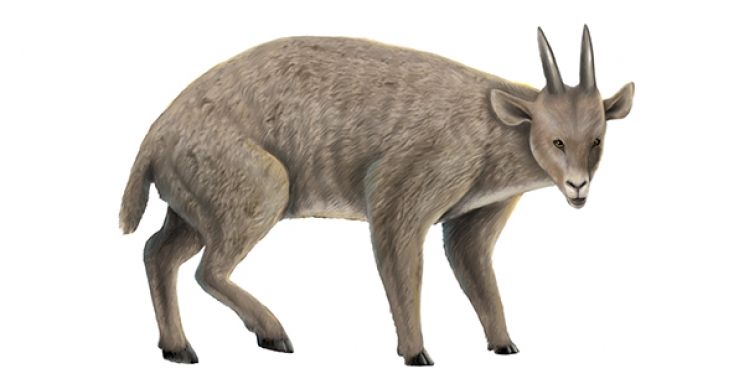Often, islands serve as natural laboratories for the study of evolution because they are less complex systems compared to continental ones. The geographical isolation that hinders species migration, the limitation of physical space, and the scarcity of food resources in island ecosystems contribute to common evolutionary patterns among the fauna that inhabit them. Therefore, insular endemisms represent life forms that have evolved under very different conditions than those on the mainland. In contrast, continental ecosystems exhibit high diversity, with terrestrial predators occupying the apex of the trophic pyramid. In these ecosystems, the predator-prey interaction plays a crucial role as one of the primary evolutionary drivers. Avoiding being hunted and hunting for survival creates an evolutionary dynamic that shapes the skills (locomotive, sensory, biological) of both prey and predators.
However, terrestrial predators are absent on islands. This fact completely determines the adaptations of the herbivores that inhabit them. They no longer need to escape from predators, so all the adaptations that serve to minimize predation on the mainland are no longer necessary. They reduce their locomotive capacity, sensory organs, brain size, and change their body mass and other features in their biology. Specifically, changes in body mass follow a well-defined rule known as the Island rule. This pattern is often revealed as dwarfism or gigantism, where species are significantly smaller or larger on islands compared to their continental counterparts. Currently, the causes of these size changes are unknown, and their origin remains a mystery.
In the fossil record, there are many examples that illustrate this variation in body size. One emblematic species is the Sicilian dwarf elephant (Palaeoloxodon falconeri). Compared to modern elephant species, it is very small, only about one meter tall and an estimated weight of 250 kilos. In Menorca, there was the giant rabbit Nuralagus rex, which weighed 10 times more than a modern rabbit. In the Balearic Islands, we also find Myotragus balearicus, a dwarf goat that underwent significant changes during its evolution, particularly affecting the locomotor system, size, as well as the nervous and alimentary systems. Dwarfism, reduction of the brain and changes in dentition are its most characteristic evolutionary traits.
The study led by Roberto Rozzi (German Centre for Integrative Biodiversity Research (iDiv)), and published in March 2023 in the journal Science, evaluated how the evolution of body size in species would increase the susceptibility to extinction of insular endemic taxa. The authors establish a causal relationship between the size differences of island species, according to the Island rule, and their vulnerability to the extinction risk, using correlations derived from statistical models (GLMM). They found a higher risk of extinction and endangerment in the most extreme dwarf and giant taxa of the islands, but they didn't provide the causes or mechanisms underlying this causality.
In a reply published in the same journal of the original article, Köhler and Moyà-Solà respond by highlighting that a correlation between the two aspects does not imply causality. In the text, the researchers point out that statistical models do not reveal the causal structure of the data, therefore a prior causal analysis is necessary to identify, adjust, and consider possible variables that influence the evolution of island species. For example, Rozzi and the research team have not taken into account the life history variable, such as maximum body size, longevity, age at maturity, and fecundity, despite being fundamental components of fitness (defined as the proportion of an individual's genes in the total genes of the next generation) in species evolving to ensure reproductive success throughout their lifetime. These fitness components (especially the time to reach sexual maturity and the quantity and quality of offspring) are crucial determinants of population resilience and thus, vulnerability.
Köhler and Moyà-Solà argue that insular evolutionary models, based on life history (LH) evolution, clearly demonstrate that size changes are a secondary consequence of growth rate, sexual maturity, and reproductive patterns – in other words, changes in LH. They propose that the correlation between LH parameters should be investigated instead of size changes, as changes in body size alone are not a causal mechanism since they do not incorporate the intrinsic biological parameters (fitness components) that explain or cause the risk of extinction.
While the Rozzi team suggests that body size should be included within the parameters used to determine the extinction risk of a species by conservation agencies such as the International Union for Conservation of Nature (IUCN), researchers at the ICP believe that this suggestion, in addition to overlooking the fact that life history characteristics are already part of the IUCN parameters, can lead to serious errors in estimating the extinction risk of an insular species, errors that go beyond a theoretical discussion.
Nowadays, biodiversity conservation has become an emergency because the impact of human activities on the biosphere reaches devastating levels. It is estimated that an average of 150-200 species of plants and animals become extinct every day. The speed of this extinction phase far exceeds the rate at which the other five major documented extinctions in the history of life on Earth have occurred. In the case of islands, this issue is exacerbated because island biotas are devastated when they come into contact with human activity. For this reason, Köhler and Moyà-Solà emphasize that any suggestions regarding how to approach biodiversity preservation in international conservation agencies must be based on solid foundations to avoid errors in protective measures.
Main image: Artwork of the life appearance of Myotragus balearicus. Roc Olivé / © Institut Català de Paleontologia Miquel Crusafont. With the collaboration of Fundación Española para la Ciencia y la Tecnología – Ministerio de Economía, Industria y Competitividad.















